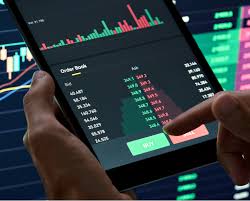Understanding Trading Crypto Charts
In the ever-evolving world of cryptocurrency, understanding the nuances of trading is essential for both novice and experienced traders. One of the most critical skills in this domain is decoding Trading Crypto Charts click here. These charts provide vital information that can assist traders in making informed decisions. This article delves into the various aspects of crypto trading charts, their importance, types, and how to interpret them effectively.
The Importance of Trading Crypto Charts
Trading charts act as a visual representation of market activity over time. They encapsulate price movements, trading volume, market trends, and investor sentiment. For many traders, these charts are the bedrock of their trading strategies, enabling them to analyze historical data and predict future price movements. Understanding how to read and interpret these charts can significantly enhance a trader’s ability to capitalize on market opportunities.
Types of Crypto Trading Charts
There are several types of trading charts that traders can use, each with its unique features and benefits. The three most common types are:
- Line Charts: These are the simplest type of charts that plot the closing prices of a cryptocurrency over a specific time frame. Line charts are primarily used to understand the general price trend.
- Bar Charts: Bar charts offer more detailed information than line charts. Each bar represents the price action for a specific time period and includes the opening, closing, high, and low prices, providing traders with deeper insight into market fluctuations.
- Candlestick Charts: Candlestick charts are a favorite among traders for their ability to convey information at a glance. Each candlestick represents price movements during a designated time period and displays the opening, closing, high, and low prices. The body of the candlestick can indicate bullish or bearish trends depending on whether the closing price is higher or lower than the opening price.
Key Components of Trading Crypto Charts
To effectively utilize trading charts, traders must understand the following key components:
1. Timeframes

The timeframe refers to the duration for which the price data is plotted. Common timeframes include:
- 1 minute
- 5 minutes
- 15 minutes
- 1 hour
- 1 day
Each timeframe provides a different perspective of market behavior, allowing traders to analyze both short-term and long-term trends.
2. Volume
Volume indicates the number of units traded during a specific period. High volume often accompanies significant price movements and can signal potential reversals or continuations in price trends.
3. Support and Resistance Levels
Support and resistance levels are critical concepts in trading analysis. Support is a price level where buying interest tends to be strong enough to overcome selling pressure, while resistance is a price level where selling interest often surpasses buying pressure. These levels can serve as entry or exit points for traders.
This Trend is Your Friend: Identifying Trends
Understanding market trends is vital for any trader. A trend may be:
- Uptrend: Characterized by higher highs and higher lows.
- Downtrend: Marked by lower highs and lower lows.
- Sideways Trend: Occurs when the price moves within a horizontal range, indicating indecision in the market.

Identifying trends allows traders to align their strategies with market movements, enhancing their potential for profit.
Chart Patterns and Technical Indicators
Many traders utilize chart patterns and technical indicators to enhance their analysis. Some popular chart patterns include:
- Head and Shoulders: This pattern indicates a reversal and can be identified by three peaks – a higher peak (the head) between two lower peaks (the shoulders).
- Double Tops and Bottoms: These patterns signal potential reversals in market trends, with double tops indicating a shift from bullish to bearish and double bottoms suggesting a turn from bearish to bullish.
Technical indicators, such as Moving Averages, RSI (Relative Strength Index), and MACD (Moving Average Convergence Divergence), provide further analytical tools for traders. By understanding these indicators, traders can refine their entry and exit strategies and improve their decision-making.
Risk Management in Crypto Trading
No trading strategy is complete without a proper risk management plan. Here are some essential tips for managing risk when trading cryptocurrencies:
- Set Stop-Loss Orders: These orders automatically sell your position once it reaches a specified price point, limiting potential losses.
- Only Invest What You Can Afford to Lose: The volatile nature of cryptocurrencies means that prices can fluctuate dramatically in a short period. It’s crucial to only invest capital you are prepared to lose.
- Diversify Your Portfolio: Spreading your investments across different cryptocurrencies can help reduce risk. Diversification ensures that your overall portfolio is not overly reliant on the price movement of a single asset.
Final Thoughts
Trading crypto charts can seem daunting at first, but with practice and the right knowledge, anyone can become proficient in interpreting these vital tools. Understanding the different chart types, key components, trends, patterns, and sound risk management practices can empower you to make more informed trading decisions. Whether you’re a beginner or have some experience in crypto trading, mastering the art of reading trading crypto charts is essential to your success in the market.
